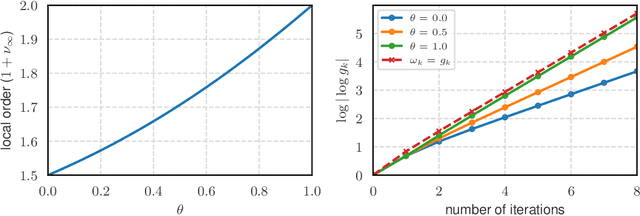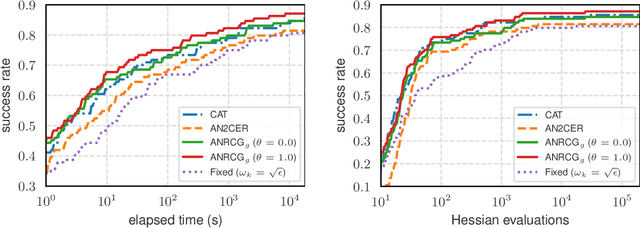Chao Ding
Benchmarking Ethical and Safety Risks of Healthcare LLMs in China-Toward Systemic Governance under Healthy China 2030
May 12, 2025Abstract:Large Language Models (LLMs) are poised to transform healthcare under China's Healthy China 2030 initiative, yet they introduce new ethical and patient-safety challenges. We present a novel 12,000-item Q&A benchmark covering 11 ethics and 9 safety dimensions in medical contexts, to quantitatively evaluate these risks. Using this dataset, we assess state-of-the-art Chinese medical LLMs (e.g., Qwen 2.5-32B, DeepSeek), revealing moderate baseline performance (accuracy 42.7% for Qwen 2.5-32B) and significant improvements after fine-tuning on our data (up to 50.8% accuracy). Results show notable gaps in LLM decision-making on ethics and safety scenarios, reflecting insufficient institutional oversight. We then identify systemic governance shortfalls-including the lack of fine-grained ethical audit protocols, slow adaptation by hospital IRBs, and insufficient evaluation tools-that currently hinder safe LLM deployment. Finally, we propose a practical governance framework for healthcare institutions (embedding LLM auditing teams, enacting data ethics guidelines, and implementing safety simulation pipelines) to proactively manage LLM risks. Our study highlights the urgent need for robust LLM governance in Chinese healthcare, aligning AI innovation with patient safety and ethical standards.
Building a Human-Verified Clinical Reasoning Dataset via a Human LLM Hybrid Pipeline for Trustworthy Medical AI
May 11, 2025Abstract:Despite strong performance in medical question-answering, the clinical adoption of Large Language Models (LLMs) is critically hampered by their opaque 'black-box' reasoning, limiting clinician trust. This challenge is compounded by the predominant reliance of current medical LLMs on corpora from scientific literature or synthetic data, which often lack the granular expert validation and high clinical relevance essential for advancing their specialized medical capabilities. To address these critical gaps, we introduce a highly clinically relevant dataset with 31,247 medical question-answer pairs, each accompanied by expert-validated chain-of-thought (CoT) explanations. This resource, spanning multiple clinical domains, was curated via a scalable human-LLM hybrid pipeline: LLM-generated rationales were iteratively reviewed, scored, and refined by medical experts against a structured rubric, with substandard outputs revised through human effort or guided LLM regeneration until expert consensus. This publicly available dataset provides a vital source for the development of medical LLMs that capable of transparent and verifiable reasoning, thereby advancing safer and more interpretable AI in medicine.
A Regularized Newton Method for Nonconvex Optimization with Global and Local Complexity Guarantees
Feb 07, 2025


Abstract:We consider the problem of finding an $\epsilon$-stationary point of a nonconvex function with a Lipschitz continuous Hessian and propose a quadratic regularized Newton method incorporating a new class of regularizers constructed from the current and previous gradients. The method leverages a recently developed linear conjugate gradient approach with a negative curvature monitor to solve the regularized Newton equation. Notably, our algorithm is adaptive, requiring no prior knowledge of the Lipschitz constant of the Hessian, and achieves a global complexity of $O(\epsilon^{-\frac{3}{2}}) + \tilde O(1)$ in terms of the second-order oracle calls, and $\tilde O(\epsilon^{-\frac{7}{4}})$ for Hessian-vector products, respectively. Moreover, when the iterates converge to a point where the Hessian is positive definite, the method exhibits quadratic local convergence. Preliminary numerical results illustrate the competitiveness of our algorithm.
Diffusion-Driven Self-Supervised Learning for Shape Reconstruction and Pose Estimation
Mar 19, 2024



Abstract:Fully-supervised category-level pose estimation aims to determine the 6-DoF poses of unseen instances from known categories, requiring expensive mannual labeling costs. Recently, various self-supervised category-level pose estimation methods have been proposed to reduce the requirement of the annotated datasets. However, most methods rely on synthetic data or 3D CAD model for self-supervised training, and they are typically limited to addressing single-object pose problems without considering multi-objective tasks or shape reconstruction. To overcome these challenges and limitations, we introduce a diffusion-driven self-supervised network for multi-object shape reconstruction and categorical pose estimation, only leveraging the shape priors. Specifically, to capture the SE(3)-equivariant pose features and 3D scale-invariant shape information, we present a Prior-Aware Pyramid 3D Point Transformer in our network. This module adopts a point convolutional layer with radial-kernels for pose-aware learning and a 3D scale-invariant graph convolution layer for object-level shape representation, respectively. Furthermore, we introduce a pretrain-to-refine self-supervised training paradigm to train our network. It enables proposed network to capture the associations between shape priors and observations, addressing the challenge of intra-class shape variations by utilising the diffusion mechanism. Extensive experiments conducted on four public datasets and a self-built dataset demonstrate that our method significantly outperforms state-of-the-art self-supervised category-level baselines and even surpasses some fully-supervised instance-level and category-level methods.
Video Frame Interpolation with Stereo Event and Intensity Camera
Jul 17, 2023Abstract:The stereo event-intensity camera setup is widely applied to leverage the advantages of both event cameras with low latency and intensity cameras that capture accurate brightness and texture information. However, such a setup commonly encounters cross-modality parallax that is difficult to be eliminated solely with stereo rectification especially for real-world scenes with complex motions and varying depths, posing artifacts and distortion for existing Event-based Video Frame Interpolation (E-VFI) approaches. To tackle this problem, we propose a novel Stereo Event-based VFI (SE-VFI) network (SEVFI-Net) to generate high-quality intermediate frames and corresponding disparities from misaligned inputs consisting of two consecutive keyframes and event streams emitted between them. Specifically, we propose a Feature Aggregation Module (FAM) to alleviate the parallax and achieve spatial alignment in the feature domain. We then exploit the fused features accomplishing accurate optical flow and disparity estimation, and achieving better interpolated results through flow-based and synthesis-based ways. We also build a stereo visual acquisition system composed of an event camera and an RGB-D camera to collect a new Stereo Event-Intensity Dataset (SEID) containing diverse scenes with complex motions and varying depths. Experiments on public real-world stereo datasets, i.e., DSEC and MVSEC, and our SEID dataset demonstrate that our proposed SEVFI-Net outperforms state-of-the-art methods by a large margin.
A Semantic Segmentation Network for Urban-Scale Building Footprint Extraction Using RGB Satellite Imagery
Apr 02, 2021



Abstract:Urban areas consume over two-thirds of the world's energy and account for more than 70 percent of global CO2 emissions. As stated in IPCC's Global Warming of 1.5C report, achieving carbon neutrality by 2050 requires a scalable approach that can be applied in a global context. Conventional methods of collecting data on energy use and emissions of buildings are extremely expensive and require specialized geometry information that not all cities have readily available. High-quality building footprint generation from satellite images can accelerate this predictive process and empower municipal decision-making at scale. However, previous deep learning-based approaches use supplemental data such as point cloud data, building height information, and multi-band imagery - which has limited availability and is difficult to produce. In this paper, we propose a modified DeeplabV3+ module with a Dilated ResNet backbone to generate masks of building footprints from only three-channel RGB satellite imagery. Furthermore, we introduce an F-Beta measure in our objective function to help the model account for skewed class distributions. In addition to an F-Beta objective function, we incorporate an exponentially weighted boundary loss and use a cross-dataset training strategy to further increase the quality of predictions. As a result, we achieve state-of-the-art performance across three standard benchmarks and demonstrate that our RGB-only method is agnostic to the scale, resolution, and urban density of satellite imagery.
Matrix optimization based Euclidean embedding with outliers
Dec 23, 2020



Abstract:Euclidean embedding from noisy observations containing outlier errors is an important and challenging problem in statistics and machine learning. Many existing methods would struggle with outliers due to a lack of detection ability. In this paper, we propose a matrix optimization based embedding model that can produce reliable embeddings and identify the outliers jointly. We show that the estimators obtained by the proposed method satisfy a non-asymptotic risk bound, implying that the model provides a high accuracy estimator with high probability when the order of the sample size is roughly the degree of freedom up to a logarithmic factor. Moreover, we show that under some mild conditions, the proposed model also can identify the outliers without any prior information with high probability. Finally, numerical experiments demonstrate that the matrix optimization-based model can produce configurations of high quality and successfully identify outliers even for large networks.
3DPVNet: Patch-level 3D Hough Voting Network for 6D Pose Estimation
Sep 15, 2020



Abstract:In this paper, we focus on estimating the 6D pose of objects in point clouds. Although the topic has been widely studied, pose estimation in point clouds remains a challenging problem due to the noise and occlusion. To address the problem, a novel 3DPVNet is presented in this work, which utilizes 3D local patches to vote for the object 6D poses. 3DPVNet is comprised of three modules. In particular, a Patch Unification (\textbf{PU}) module is first introduced to normalize the input patch, and also create a standard local coordinate frame on it to generate a reliable vote. We then devise a Weight-guided Neighboring Feature Fusion (\textbf{WNFF}) module in the network, which fuses the neighboring features to yield a semi-global feature for the center patch. WNFF module mines the neighboring information of a local patch, such that the representation capability to local geometric characteristics is significantly enhanced, making the method robust to a certain level of noise. Moreover, we present a Patch-level Voting (\textbf{PV}) module to regress transformations and generates pose votes. After the aggregation of all votes from patches and a refinement step, the final pose of the object can be obtained. Compared to recent voting-based methods, 3DPVNet is patch-level, and directly carried out on point clouds. Therefore, 3DPVNet achieves less computation than point/pixel-level voting scheme, and has robustness to partial data. Experiments on several datasets demonstrate that 3DPVNet achieves the state-of-the-art performance, and is also robust against noise and occlusions.
Convex Optimization Learning of Faithful Euclidean Distance Representations in Nonlinear Dimensionality Reduction
Jun 22, 2014



Abstract:Classical multidimensional scaling only works well when the noisy distances observed in a high dimensional space can be faithfully represented by Euclidean distances in a low dimensional space. Advanced models such as Maximum Variance Unfolding (MVU) and Minimum Volume Embedding (MVE) use Semi-Definite Programming (SDP) to reconstruct such faithful representations. While those SDP models are capable of producing high quality configuration numerically, they suffer two major drawbacks. One is that there exist no theoretically guaranteed bounds on the quality of the configuration. The other is that they are slow in computation when the data points are beyond moderate size. In this paper, we propose a convex optimization model of Euclidean distance matrices. We establish a non-asymptotic error bound for the random graph model with sub-Gaussian noise, and prove that our model produces a matrix estimator of high accuracy when the order of the uniform sample size is roughly the degree of freedom of a low-rank matrix up to a logarithmic factor. Our results partially explain why MVU and MVE often work well. Moreover, we develop a fast inexact accelerated proximal gradient method. Numerical experiments show that the model can produce configurations of high quality on large data points that the SDP approach would struggle to cope with.
 Add to Chrome
Add to Chrome Add to Firefox
Add to Firefox Add to Edge
Add to Edge